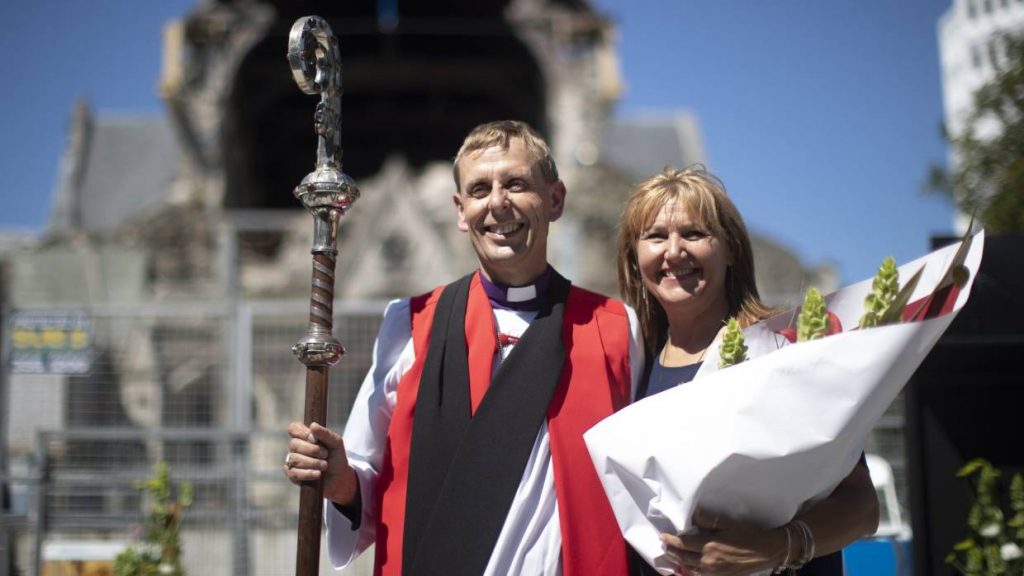Last year the Anglican Church in Aotearoa, New Zealand and Polynesia (ACANZP) voted in its General synod to move forward with the blessing of same-sex unions. Though stopping short of actual marriage equality, the compromise was still too much to bear for some antipodal Anglicans.
The Diocese of Sydney, in neighboring Australia, offered to set up an alternate overlapping diocese for those opposed to the change with ACANZP’s blessing, but their offer was not taken up. Nonetheless, a group of dissidents decided to break away and form their own new church grouping.
Four parishes in Christchurch diocese have decided to leave and the newly elected and consecrated bishop of Christchurch, noted blogger Peter Carrell has been thinking about what it means to be “Anglican” in a series of posts.
Carrell, a conservative who supported the motion to allow same-sex blessings has offered three posts over the past two weeks trying to wrap his head around the dissension in his own patch as well as the conflict in the wider Communion. The comments at Anglicans Down Under are thoughtful and worthwhile to explore as well.
In the first post, “So, Who Is An Anglican??” Carrell starting point is a letter from another bishop offering to act as a missionary bishop in Christchurch. Though this bishop calls themselves Anglican, their church isn’t a member of the Anglican Communion. So, he asks, who gets to call themselves “Anglican”
“It depends, he answers, “if you are talking about a person who is a member of a church which is a member church/province of the Anglican Communion of which the Archbishop of Canterbury is the leading primatial bishop. I think everyone (inside and outside the Communion) accepts that such Christians are Anglican Christians.”
“It depends if you are talking about a person who is a member of a church which names itself as “Anglican” but which is not itself a member church/province of the Anglican Communion of which the Archbishop of Canterbury is the leading primatial bishop. I suggest there are a variety of answers which depend (!!) on a few factors which need ferreting out.”
Building on the first and in response to comments, Carrell offered a second post titled “If not “Who is Anglican?” then “What is Anglican?” He begins;
“In some ways last week’s post ran into some quicksand in discussion in comments: attempting to define “who is Anglican” is tricky when then are so many claimants and there is no authority/body in the world which gets to determine who is Anglican. The nearest such body is the Anglican Communion, but many self-identifying Anglicans question its legitimacy relative to “true Anglicanism”!”
“The sand may be no less quick if I suggest this week some thinking about the “what” of Anglicanism. What makes an Anglican? What defines an Anglican?”
Carrell’s answer here is deeply rooted in the context of the nation for which the church is formed.
“any church anywhere in the world can stake a claim to be “Anglican” but in these islands with our distinctive history, our church is saying that we cannot recognise such a claim in these parts unless there is a bond with Maori Anglican via constitutional and Treaty-based relationships. In other words, being Anglican hereabouts is concerned with a theology of covenant more than a theology of confession. Who are we related to?, is the critical question in the theology of covenant, in contrast to the question, What do we believe?, which lies at the heart of a confessional approach to Anglican identity.”
And then in the latest post, reflecting on his experience as an invited guest to an iftar, where he spoke with survivors of the recent horrific terroristic attacks on several Christchurch mosques, Carrell wondered about how we might build bridges within the “Anglican” world.
Titled “Bridge Building In Varied Contexts” Carrell looks at the dissonance in the relationship between CANA (the Nigerian Anglican mission to the North America) and ACNA (The Anglican Church in North America) where the three CANA dioceses were asked to choose which church they would belong to (Nigeria or ACNA) but also preserve some working relationship.
“On the one hand, this is obviously a relationally and jurisdictionally sound solution to the particular problem which arose.
On the other hand, might it point a way forward for future relationships in Anglicanland as Communion and GAFCON and ACNA etc work out what it means to be both “Anglican” in name and “Anglican” in some manner of formal/informal/official relationship?”
Carrell’s highest interest seems in finding a practical way to hold together (or bring together) all those who claim they are “Anglican.” What is Anglicanism seems to be the key question that he raises but the answer remains frustratingly elusive. GAFCON, which claims to be fully Anglican and yet whose head, Foley Beach, leads a church whose very existence is defined by being in opposition to another Anglican Church and exists outside the Communion is the current instigator of much conflict, but competing claimants to the title of “Anglican” has been a recurring issue in our tradition’s history. But, as Carrell notes, Anglicanism exists within a variety of national contexts and perhaps the most Anglican answer would be to once again return to allowing each constituent nation determine their own paths without interference from others and not invest so much energy in defining who or what Anglican can or should be.
image: Bishop Peter Carrell and his wife, Teresa Kundycki-Carrell, after his installation ceremony in Cathedral Square (IAIN MCGREGOR)

